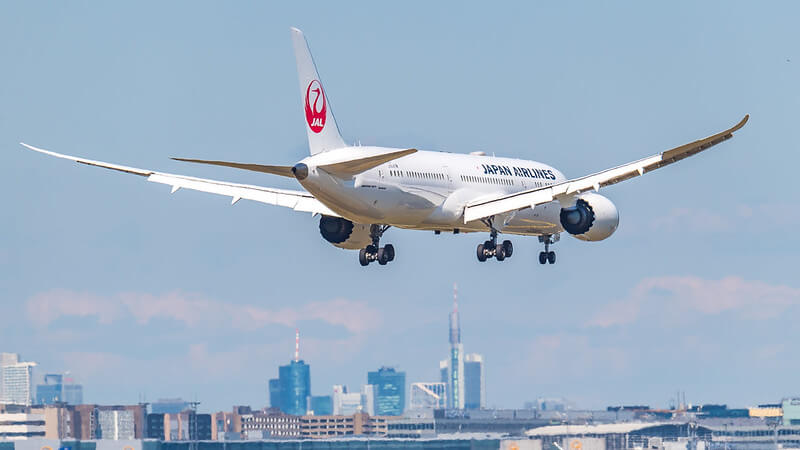
The number of foreign visitors to Japan in 2024 is very strong. From January to August this year, the number of foreigners visiting Japan reached approximately 24 million, an increase of 58% compared to the same period last year, and is certain to exceed the 31.88 million recorded in 2019.
In particular, the number of tourists from China, South Korea and Taiwan is increasing, with 3,135,600 people visiting Japan in June, the highest monthly number of visitors ever recorded. This is against the backdrop of travel restrictions due to the Corona Disaster, which had largely suppressed tourism demand for several years. During this period, travellers around the world refrained from travelling, but as soon as the pandemic was over, the suppressed desire to travel was released at once, and it is said that many people resumed travelling en masse as a ‘revenge trip’.
In addition, in Asian countries, visa relaxation and the expansion of low-cost carriers (LCCs) have also led to a rapid increase in the number of tourists, as Japan is a popular travel destination.
The increase in inbound tourism is expected to have a significant economic impact, but on the other hand, local tourist cities are still unable to keep up with the infrastructure.
Overtourism with the increase in foreign tourists has also spawned various problems, such as overcrowding in tourist areas and environmental impact. As one of the countermeasures, a policy to introduce a tourism tax is being developed. The tax is positioned as a tax to cover tourism-related costs, with the aim of preserving tourist attractions and improving tourist etiquette, particularly in popular tourist destinations where overcrowding and environmental impact are problems. The following tourism taxes currently exist in Japan.
1. international tourist passenger tax
Introduced by the Government of Japan on 7 January 2019, the International Tourist Tax is a tax of 1,000 yen per person collected at the time of departure from Japan. It is levied on all travellers (both Japanese and non-Japanese) leaving Japan and the tax revenue is mainly used for the following purposes:
Preserving tourism resources and improving the tourism experience: protecting tourist attractions and improving infrastructure, making tourist information centres multilingual and providing Wi-Fi for tourists.
Promoting local tourism: used for promotion and infrastructure improvements to reduce the concentration of tourists in urban areas and utilise local tourism resources.
improving convenience for tourists: e.g. infrastructure development to reduce congestion at airports and make travel more convenient.
2.accommodation tax by local authorities
Local governments have also introduced their own accommodation taxes. The accommodation tax is levied on accommodation charges and the tax revenue is used to improve tourism infrastructure and regional development. The main examples of the introduction of this tax are as follows:
Tokyo and Osaka: In 2002, the Tokyo Metropolitan Government introduced Japan’s first accommodation tax. A tax of between 200 yen and 500 yen per night is levied, depending on the accommodation rate. Osaka Prefecture also introduced a similar accommodation tax in 2017.
Kyoto: the City of Kyoto introduced an accommodation tax in 2018, charging tourists between 200 yen and 1,000 yen per night. Kyoto City uses this tax revenue to improve tourism infrastructure, maintain and manage tourist attractions, as well as to reduce the burden on local residents.
3. purposes for which tourism taxes are used
The tourism tax is used to help preserve tourist destinations and improve tourism infrastructure. More specifically, it is used for the following projects.
Protection of cultural assets: the tax is used to maintain and restore cultural assets and natural resources in tourist destinations. In Kyoto, for example, it is used to preserve temples and old townscapes.
Measures to reduce congestion: funds are also used to improve transport infrastructure to reduce congestion in popular tourist destinations and for campaigns to disperse tourist flows.
Improved services for tourists:
Services are also being developed to make the stay of international tourists more comfortable, such as more multilingual tourist information centres, free Wi-Fi and cashless payment facilities.
Prospects for the future
Tourism taxation is an important source of revenue for making the tourism industry sustainable while reducing the burden on local communities caused by the rapid increase in the number of tourists. In particular, local communities are expected to utilise this tax revenue to promote local development, preserve tourist attractions and improve the lives of residents.
The introduction of a tourism tax is an important step towards the sustainable development of the tourism industry, as it is a mechanism to encourage tourists themselves to contribute to their local communities.







